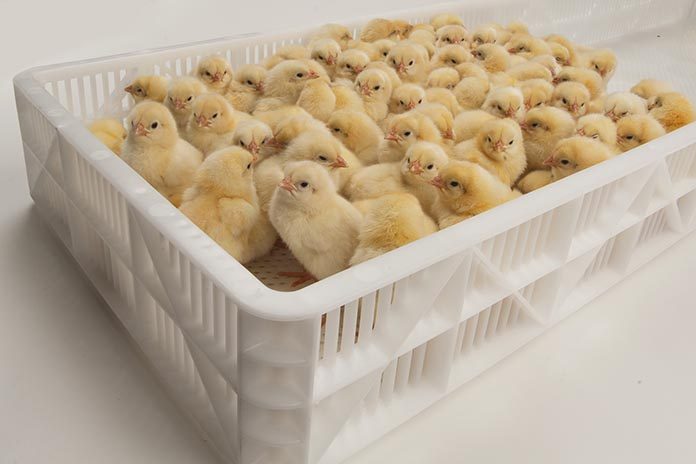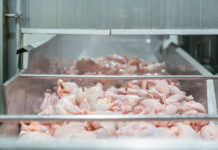
Development of the avian embryo, or chick, can be categorized into one of two strategies designed to meet very different physiological and biological needs. The avian embryo will develop as either an altricial or precocial chick, each with their own specific set of needs necessary to survive after hatch.
When comparing the two incubation and developmental strategies, the altricial chicks undergo a significant amount of their ’embryo growth and development’ after hatch while the precocial chicks undergo a more significant portion of their development during the incubation period so they can hatch ‘ready to go’. Altricial chick development is common in perching type birds that usually nest in trees, birds such as; songbirds, pigeons, raptors, etc. The young hatch as helpless naked birds which are unable to open their eyes or even hold up their heads. The young altricial chicks cannot maintain their own body temperature, even for short periods of time, and are thus very reliant on their parents for warmth and brooding.
Additionally, the parents – usually both are involved – are very instrumental in feeding and caring for the newly hatched chicks until they fledge the nest to begin life on their own. These types of birds will lay their clutch of eggs over several days and will usually begin to incubate the eggs before all eggs are laid, resulting in chicks hatching at various intervals over a period of a few days.
The newly hatched chicks will stay in the protected nest away from most predators and are fed individually by their parents. Because the chicks hatch over several days, there is often a great size difference between the chicks; with the last hatched and smallest of the clutch often succumbing to the increased competition for feed and space from their larger siblings. The growing chicks are then fed and cared for until each one has developed enough to leave the nest.
The young precocial chick hatches with a warm covering with the ability to reasonably maintain body temperature, eyes are open with no reliance on the parents to physically bring food back to the newly hatched chicks, as they are able to walk within hours after hatch.
The mother will lay her clutch of eggs over a period of several days to a couple of weeks, depending upon the clutch size. However, she will not begin incubating the eggs until all eggs are laid to try and maintain a narrow hatch window as the newly hatched chicks will all need to be escorted together by the mother away from nest site in search of feed.
To enable these precocial chicks to hatch together and leave the nest together, there are a couple of biological mechanisms in place to facilitate this function. First, in the hours leading up to the completion of the hatching process, precocial chicks engage in an activity called ‘clicking’, where the chicks are able to communicate with each other from within the shell in an effort to synchronize the hatch time.
The second is eggs that produce precocial chicks contain a higher percent yolk (~40% vs 25%) as compared to eggs from altricial chicks. This allows the chicks to remain in the nest after hatch to wait for the other chicks to hatch so they can all leave the nest together. Nature intended for the chicks to use this available yolk to synchronize the post hatch feeding process between all hatchlings.
If the first hatched chicks try to forage for feed without the mother or the group they may become subject to predation without the protective instincts of the mother. This is what nature intended; that all chicks are able to begin feeding at the same time with the first hatched chicks utilizing the nutrients in the yolk in an effort to synchronize the early feeding process.
Feeding commercial hatched chicks
Following what nature has designed and intended, is it really necessary and beneficial to feed newly hatched chicks immediately after hatch? In nearly every area of poultry production systems, uniformity is a key and very critical component to success.
When it is not achieved, inefficiencies often result in areas including the hatchery, the brooding house, and all the way to the processing plant. It is widely known and accepted that when chicks are not uniform from the start, problems will ensue whether they be replacement parent stock or broilers destined for the market.
Uniformity in replacement breeders has been shown to result in a better and more productive breeder house. Uniformity of young breeders tends to ‘level the playing field’ during rearing and allows the birds to more evenly compete with each other for resources such as feed, water and space.
Feed consumption and light duration is controlled and limited to encourage the majority of the birds to mature at an even pace, responding to light stimulation together and thereby commencing egg production together. Uniformity in the breeder house has been shown to improve egg size uniformity, egg production and broiler flock performance.
Uniform egg size results in uniform chicks. When placed chicks are more uniform, productivity of the entire flock is improved. Nearly every hatchery manager desires the most uniform egg size possible, and nearly every broiler manager or grower would greatly prefer chicks that are sourced from similar aged parent flocks to improve the uniformity of chick size at placement.
When chicks are placed that hatched from eggs or from parent flocks of greatly varying ages, dramatic size differences in the chicks is often the consequence with overall poor flock performance results.
In the case of the various early feeding programs, a number of factors of concern must be considered. It is well known that research has continually shown that when feed is withheld from chicks after hatch, there is a delayed growth curve in those chicks as compared to chicks from the same hatch provided with feed immediately at placement.
The chicks, having feed withheld from them for periods of time after hatch, will never catch up with the others of the same age and hatch, and therefore would take a day or so longer to reach the desired market weight. It would be unadvisable for anyone to intentionally place birds in a single house that had hatched and therefore begun feed consumption at one or more days apart from each other, as final flock uniformity would be negatively affected and birds would be sent to the processing plant with one or more day’s difference in growth rate.
Additionally, the unfed chicks placed in a house that are seeing feed for the first time, have to compete with chicks that have had access and have consumed feed and water for various periods of time. This increased competition would likely be another cause to negatively affect uniformity, as the chicks having been fed for extended periods of time would be much more active and running around with respect to the chicks still searching for food.
Would a producer want to take a group of hatched chicks and immediately place some on feed and water then intermittently over the next 36 hours, place new groups of newly hatched chicks in that same house and let them compete for feed and water with the older chicks? Nearly all would decline to do this.
This would create a less uniform housed group of chicks from the start, resulting with the last chicks placed never catching up in terms of body weight. Essentially, this is what is happening when chicks are fed as soon as they hatch, they are all starting on feed at different time intervals in relation to each other.
If in replacement breeder farms, birds are fed and light managed in a manner to allow birds to mature at each birds own pace, the results would be exceedingly poor uniformity and poor overall performance of the breeders and the progeny. If hatched broilers are each allowed to consume feed as soon as they hatch, the same result is likely, poor uniformity.
Summary
Nature, and the biology of the precocial chick, is designed for the optimal survival of the group of chicks as a whole with the first chicks hatched utilizing their yolk reserves to be ready for all chicks to begin feed consumption at the same time. This is the natural process of precocial chick growth and development.
While it may be beneficial for an individual chick to begin feed consumption immediately after hatch, the growth and development and uniformity of the group of chicks may be hindered. Currently research in a controlled setting is underway to more fully investigate this practice of early feeding to compare livability, growth and uniformity of the birds through processing with groups of birds from the same hatch where feeding is initiated at the same time to the entire group of hatched chicks. Once these studies are concluded, the science will support the best procedure.
First published in IHP, May 2018.

















